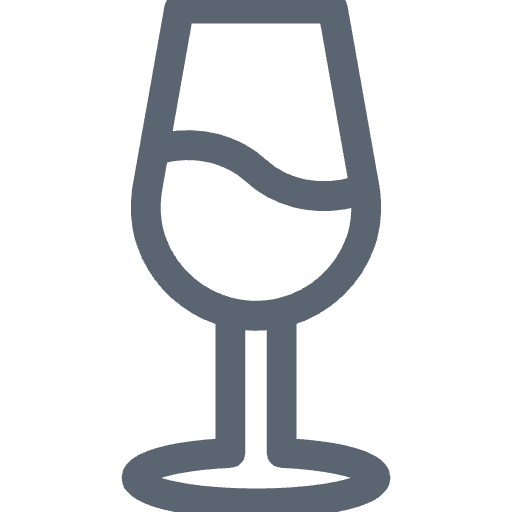GENERAL INFORMATION ABOUT GERMAN WINES
The history of German viticulture is diverse and dates back to Roman times. Over 100 years ago, German wines were among the most renowned and expensive in the world. But in the second half of the 20th century, viticulture fell into crisis, culminating in the glycol scandal of the 1980s. Mass-produced and inferior quality dominated the market, and the once highly regarded German wines were in danger of disappearing into obscurity. But shortly before the turn of the millennium, a turning point began: a new generation of winemakers, inspired by international experience and innovative ideas, led German viticulture into a new era.
Today, German wines stand for freshness, precision, and impressive variety. Climate change, which is problematic in other regions, has actually benefited German winemakers in cooler regions, as the grapes now ripen better. The combination of tradition and innovation has brought German viticulture back to the forefront, with a variety of wines that are competitive on the international stage.
RIESLING – A GERMAN SPECIALTY
When talking about German wine, Riesling cannot be left out. This grape variety is Germany's flagship and grows in the famous wine-growing regions of the Mosel, Rheingau, Nahe, and Palatinate. Riesling is known for its lively acidity and versatility, ranging from dry to sweet. Particularly noteworthy is its ability to reflect the terroir: A Riesling from the Mosel tastes different from one from the Rheingau, even though both are made from the same grape variety. Thanks to the cool climate, the wines develop a special freshness and high aging potential, making them internationally sought-after top wines.
In the past, many German Rieslings were vinified with residual sweetness to balance the acidity, but today, dry versions are particularly popular. These modern Rieslings impress with perfumed fruit aromas, great brilliance, and extraordinary vitality – without residual sweetness or the use of oak. They are among the best white wines in the world.
NEW WINE IN NEW WINESKINS
In recent decades, German winemakers have begun to produce not only white wines, but also excellent red wines. Pinot Noir exemplifies the rise of German red wines, often referred to as the "German red wine miracle." Pinot Noirs are now being produced in the Baden, Ahr, and Palatinate regions that rival the finest Burgundies. Varieties such as Blaufränkisch and even Cabernet Sauvignon are also enjoying growing popularity and achieving high quality.
Two-thirds of German wines today are dry or semi-dry. Riesling remains the most widely planted grape variety, followed by other varieties such as Pinot Blanc , Pinot Gris , and Pinot Noir . Top-quality wines that are recognized worldwide are produced, particularly in the Mosel, Rheingau, Nahe, and Palatinate regions. Silvaner is currently experiencing a renaissance in Franconia, while Pinot Blanc and Pinot Gris are becoming increasingly popular in Baden and the Palatinate .
FAQ ABOUT GERMAN WINES
What are the typical grape varieties for German wines?
The most well-known German grape varieties are Riesling , Pinot Noir , Pinot Gris , and Pinot Blanc. These varieties reflect the diversity of German viticulture.
What distinguishes German Riesling?
German Riesling is known for its vibrant acidity, its ability to reflect terroir, and its versatility. From dry to sweet, it offers a wide range of flavors.
Where do the best German wines come from?
The best German wines come from wine-growing regions such as the Moselle , the Rheingau , the Nahe , and the Palatinate . These regions are known worldwide for their high-quality wines.
Is only white wine produced in Germany?
No, Germany produces both excellent white and red wines . Pinot Noir , in particular, has developed significantly in recent decades and is among the country's best red wines.
What role does climate change play in German viticulture?
Climate change has so far provided positive impetus to German viticulture, as grapes ripen better. This leads to more intense aromas and higher quality wines.
How long can you store German Riesling?
Depending on its quality and ageing, a good German Riesling can be aged for many years, sometimes even decades. Noble sweet Rieslings, in particular, have enormous aging potential.
Which dishes go well with German wine?
German Riesling pairs particularly well with fish dishes, poultry, and light meals. Stronger wines like Pinot Noir pair well with meat dishes, especially game.

 Rheinhessen
Rheinhessen  Riesling, dry
Riesling, dry fruity & aromatic
fruity & aromatic

 Moselle
Moselle  Riesling, dry
Riesling, dry complex & focused
complex & focused

 Moselle
Moselle  Riesling, sweet
Riesling, sweet fruity & juicy
fruity & juicy

 Rheinhessen
Rheinhessen  Riesling, dry
Riesling, dry mineral & elegant
mineral & elegant

 Moselle
Moselle  Riesling, dry
Riesling, dry fresh & mineral
fresh & mineral

 Rheinhessen
Rheinhessen  Riesling, dry
Riesling, dry cool and juicy
cool and juicy

 Moselle
Moselle  Riesling, dry
Riesling, dry complex & focused
complex & focused

 Moselle
Moselle  Riesling, sweet
Riesling, sweet complex & concentrated
complex & concentrated

 Moselle
Moselle  Riesling, dry
Riesling, dry complex & mineral
complex & mineral

 Moselle
Moselle  Riesling, dry
Riesling, dry cool & fresh
cool & fresh

 Moselle
Moselle  Riesling, sweet
Riesling, sweet full & complex
full & complex

 Rheinhessen
Rheinhessen  Riesling, dry
Riesling, dry mineral & intense
mineral & intense

 Rheinhessen
Rheinhessen  Riesling, dry
Riesling, dry mineral & intense
mineral & intense

 Moselle
Moselle  Riesling, semi-dry
Riesling, semi-dry sparkling & fruity
sparkling & fruity

 Moselle
Moselle  Riesling, dry
Riesling, dry complex & focused
complex & focused

 Moselle
Moselle  Riesling, dry
Riesling, dry complex & focused
complex & focused

 Moselle
Moselle  Riesling, sweet
Riesling, sweet fine & radiant
fine & radiant

 Rheingau
Rheingau  Riesling, dry
Riesling, dry focused & complex
focused & complex

 Moselle
Moselle  Riesling, sweet
Riesling, sweet fruity & juicy
fruity & juicy

 Moselle
Moselle  Riesling, dry
Riesling, dry fresh & mineral
fresh & mineral





















